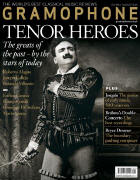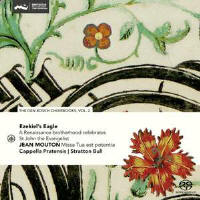Texte paru dans: / Appeared in: |
|
|
Outil de traduction (Très approximatif) |
|
|
Reviewer: Fabrice Fitch This recording might change how you hear and think about Renaissance polyphony. As pioneered by the likes of Andrew Parrott, liturgical reconstructions typically made a clear distinction between plainchant and polyphony, but recent research has shown that plainchant was often used as the basis for polyphonic improvisation (or, rather, extemporisation). Without going the whole hog – bells, preintonations and so on – Cappella Pratensis present the different liturgical items in order, some with unadorned chant, some with polyphony extemporised upon it, some alternating both, and, interspersed throughout, composed polyphony. To be clear, extemporised polyphony has increasingly featured on recordings, but this is the first I’ve heard that locates it within a sonic continuum made tangible to the listener. Not only that, but one can even distinguish within the composed polyphony between the Mass and the motets (all by Jean Mouton, and absolutely first-rate). That’s partly because the former is performed by the ensemble and the latter by soloists, but there’s also a distinction of rhetorical approach between the two genres. In navigating all this, we’re assisted by evocative, informative notes by Jennifer Bloxam, whose understanding of the place of music within liturgy is second to none. The substitution of a motet for the Elevation of the Host in place of the first ‘Osanna’ in the Mass is a further touch, reflecting recent research but also smoothing the rigid impression of the use to which polyphony was put by its creators. Cappella Pratensis’s homogeneity of timbre is impressive, especially in view of the many different registers in play. The cast is well matched from top to bottom in both the Mass and the motets. Taken as a whole, the latter make the more convincing impression (in the Gloria some of the choices of pitch may surprise), but the final sections of the Mass are the core of the experience, as they are in the liturgy. And the chant never plays second fiddle to the polyphony; the fact that it is rhythmicised is a further twist, which only adds to the project’s distinctiveness. This is the second instalment of a series exploring a set of early 16th-century choirbooks made for (and still housed in) ’s-Hertogenbosch. The first appeared five years ago and has just been reissued, but this new impetus presages something rather special. |
|




